We were lucky to catch up with Eric Rausch recently and have shared our conversation below.
Eric, thanks for taking the time to share your stories with us today How did you come up with the idea for your business?
The idea for my business came from my joy of spending time in a communal ceramic studio and making clay art in college. The community studio only became a viable business plan when I realized that I could pair pottery production with the community studio. This came together I met my Brian and Emily who had just opened their first store in columbus a year earlier called STUMP. We schemed together so Kiln Room’s first production shape would be a planter designed by and sold exclusively to STUMP. With a real client on board I was able to secure some funding and move forward with the plan.
Before that, for the six years prior to COVID, I had the honor of organizing and instructing out of the Cultural Arts Center Ceramic studio here in Columbus. This really helped me visualize what my community studio experience would be. The CAC is the premiere ceramic studio in the city to take classes but they cannot support memberships with studio access. Knowing the local market and tailoring my business plan to fill a void in columbus was key to success.
Coming up with a solid plan took years of planning and involved buying various pieces of equipment even though I didn’t have a space yet. I always had the vision and the chutzpah to believe it would actually happen.
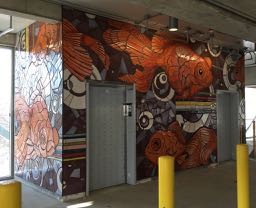

Eric, love having you share your insights with us. Before we ask you more questions, maybe you can take a moment to introduce yourself to our readers who might have missed our earlier conversations?
Thanks for asking, I was born in Wisconsin but my family moved to central Ohio when I was nine and it has been home ever since. Currently my wife Jen and I have two kids who are almost 11, Ruby and 7, Indigo, so we are quite busy!
My career as an artist has evolved over the years from pottery sales, to arts administration and instructor and now business owner and public artist.
I have a BFA in Ceramics from Ohio State, I graduated back in 2007 and since that time I have worked various part time jobs and took advantage of any opportunity I could to get paid to create artwork and build community. I learned how to write grants and work with other professionals through volunteer board work.
College taught me a lot (that I use daily now) about making things and talking about the things I make but it did not prepare me to be an entrepreneur. I gained a lot of experience through the first couple of years out of college. I applied to opportunities and took advantage of anything I could get. This led to a couple fellowships and a very strong local network of people I could ask for help.
Great things come to those who work well with others. Going solo is a fool’s errand and will end up burning you out and not being able to deliver. Learning how to work with others is so important for someone who wants to be a leader (let alone an effective leader).
Because of all the amazing people I have surrounded myself with, we can operate a ceramic production business with an emphasis on education and community building.
In 2022, I founded Mid-Ohio Ceramic Supply which is a small retail / wholesale clay materials and equipment business. We can now be one location where people can buy materials, get education, firing services and equipment. We are focusing on support and education rather than sales, knowing that sales will come along with good service and advice.
One thing I am very proud of is the diverse and inclusive community we have at Kiln Room. I have spent a lot of time in ceramic studios. All of them have had a common thread, light colored skin. Why this happens is a much bigger discussion and what can be done about it is also up for discussion. What I know for sure is that now that I am a studio owner, I can help make a difference in a small way by ensuring that everyone feels welcome and encouraged to play with clay.
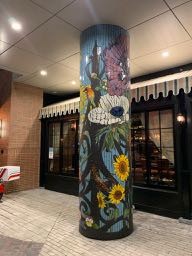

We’d really appreciate if you could talk to us about how you figured out the manufacturing process.
To be honest, I’m still figuring it out!
Two years before starting manufacturing, I invested in a hydraulic press called a RAM press. It is a 20 ton hydraulic press that can have specialized molds (called dies) attached to it to form clay into a shape that can be pressed in a two part mold. Originally purchased to make tiles, we now use this press to make planters, tiles, bricks and dishes.
We operate as a contract ceramic manufacturer, meaning We make things our clients are dreaming up. From planters and dishes, to tile and other products. Working with clients to make their product a reality is a fun challenge.
In my formative years I had toured some clay product factories, so I had a fascination with the manufacturing processes. I knew enough to know how time consuming the processes are, I am still learning how difficult it can be to make a large quantity of anything in ceramic while having minimal lost product.
Each client we take on has different needs so sometimes the RAM press is the way to go, other times we need to slip cast clay and sometimes we just use traditional clay building techniques like slap building and throwing on the potters wheel
All of the processes have their own learning curve and every time a new project is undertaken, there are new problems to iron out.
As a word of warning to anyone thinking about getting into clay art manufacturing. Be sure to add at least 20% to your total number of pieces needed when quoting price for large orders. There are so many issues that can arise that cause finished products to be unsellable. Proper planning for all aspects including product loss is key to profitability.
I (we) have not done everything perfectly and there have been plenty of learning opportunities in our first couple of years. But every project is an opportunity to learn and grow as a business.
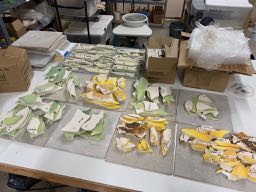
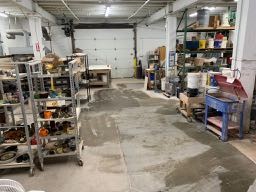
Can you talk to us about how your funded your business?
Like many entrepreneurs I have put nearly every penny my wife and I had to risk but to be clear, I have not risked everything, it is important to me to have a line drawn between business and personal expenses. My family is risking what we can but we will not be losing our house if the business fails.
As I mentioned earlier, I had spent many years thinking, dreaming and writing various business plans. By the time we were thinking about using our money we also had a little financial backing from a close family friend and a personal loan with someone I met working in a clay studio. He really believed in the vision and as we got to know each other, he became a friend and then a financial backer. The financial commitment from other people is important because it shows that you are not just in your own head with an idea. Having a great vision will get you nowhere if you don’t have people who share in it with you.
With this money, people in my corner, and the agreement with the owners of STUMP to start buying planters as soon as we could start making them, I was able to move forward.
For the most part, the business has operated off of cash flow. ,Meaning, we pay our bills with the money the business generates. This had forced me to focus more on pricing exercises to make sure we are charging appropriately.
In the last year or so, I have also utilized Square Loans, I have been pleased with the square loan process and would recommend it if someone is thinking about it. Square offers you a loan amount based on the amount of sales you are making and then gets paid back with a small percentage of each sale. I only take about 25% of the amount they offer so it can be paid back quickly.
Since cash flow is key to any business success, the need for profit is paramount. I don’t know if it was from undervaluing my own work or an ignorance of the real costs of making things but I underpriced the first projects we got into. I have learned over the years how I need to add more profit into the pricing estimate as profit is not extra money, it is the money needed to grow the business and pay back loans, etc.
Later on in the business I may take a larger bank loan but I am not going to do that until there is opportunity for growth and we have a sustainable business to loan against. So give me a couple more years to get there haha!
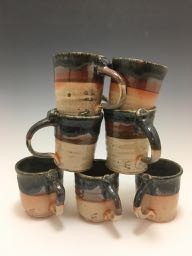
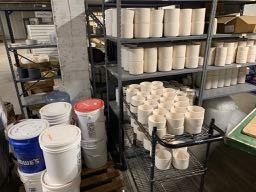
Contact Info:
- Website: www.kilnroomcolumbus.com www.ericrausch.com
- Instagram: @kilnroom @ericrauschart
Image Credits
Dylan Menges, Eric Rausch


